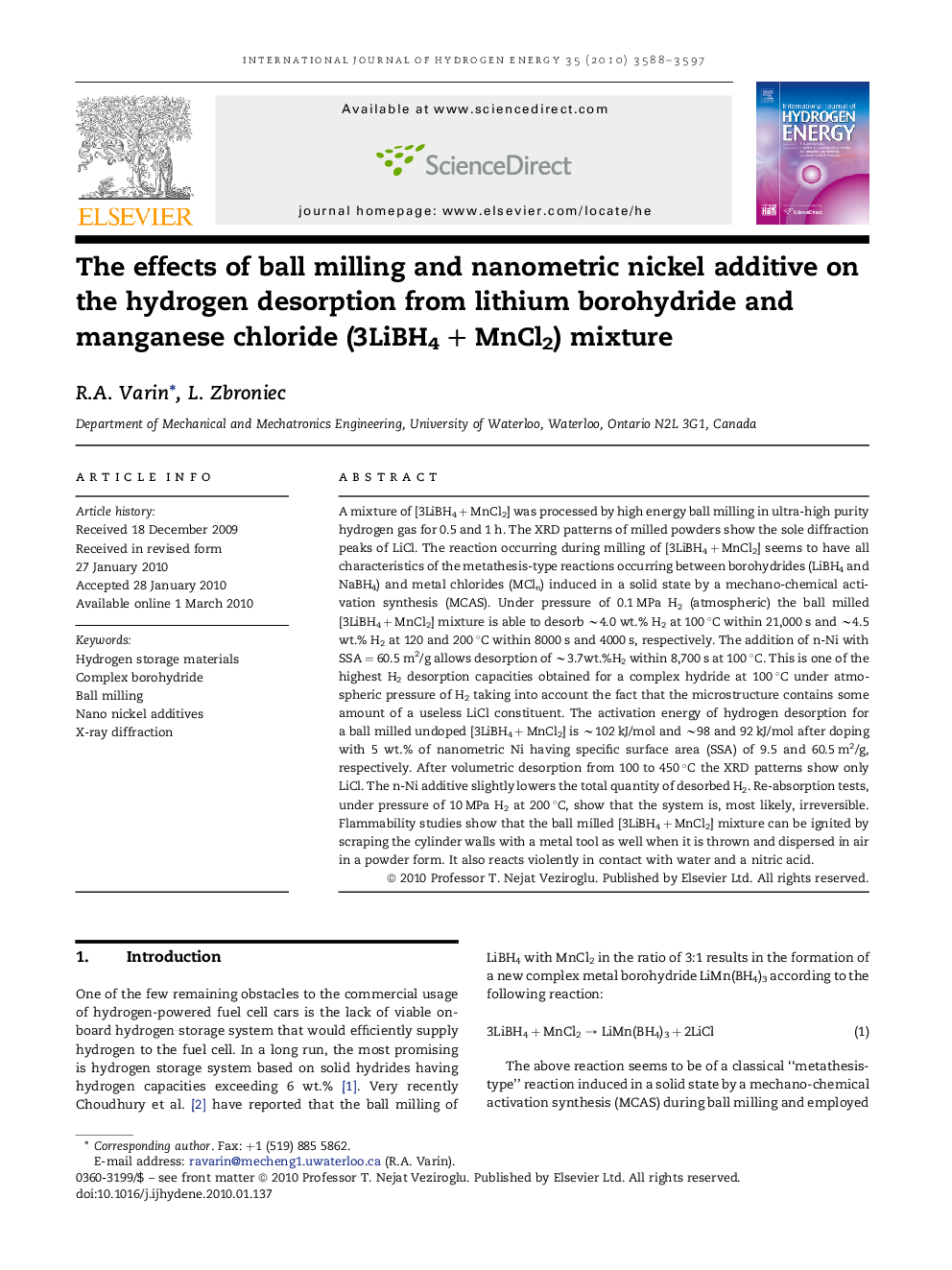| کد مقاله | کد نشریه | سال انتشار | مقاله انگلیسی | نسخه تمام متن |
|---|---|---|---|---|
| 1282917 | 1497609 | 2010 | 10 صفحه PDF | دانلود رایگان |

A mixture of [3LiBH4 + MnCl2] was processed by high energy ball milling in ultra-high purity hydrogen gas for 0.5 and 1 h. The XRD patterns of milled powders show the sole diffraction peaks of LiCl. The reaction occurring during milling of [3LiBH4 + MnCl2] seems to have all characteristics of the metathesis-type reactions occurring between borohydrides (LiBH4 and NaBH4) and metal chlorides (MCln) induced in a solid state by a mechano-chemical activation synthesis (MCAS). Under pressure of 0.1 MPa H2 (atmospheric) the ball milled [3LiBH4 + MnCl2] mixture is able to desorb ∼4.0 wt.% H2 at 100 °C within 21,000 s and ∼4.5 wt.% H2 at 120 and 200 °C within 8000 s and 4000 s, respectively. The addition of n-Ni with SSA = 60.5 m2/g allows desorption of ∼3.7wt.%H2 within 8,700 s at 100 °C. This is one of the highest H2 desorption capacities obtained for a complex hydride at 100 °C under atmospheric pressure of H2 taking into account the fact that the microstructure contains some amount of a useless LiCl constituent. The activation energy of hydrogen desorption for a ball milled undoped [3LiBH4 + MnCl2] is ∼102 kJ/mol and ∼98 and 92 kJ/mol after doping with 5 wt.% of nanometric Ni having specific surface area (SSA) of 9.5 and 60.5 m2/g, respectively. After volumetric desorption from 100 to 450 °C the XRD patterns show only LiCl. The n-Ni additive slightly lowers the total quantity of desorbed H2. Re-absorption tests, under pressure of 10 MPa H2 at 200 °C, show that the system is, most likely, irreversible. Flammability studies show that the ball milled [3LiBH4 + MnCl2] mixture can be ignited by scraping the cylinder walls with a metal tool as well when it is thrown and dispersed in air in a powder form. It also reacts violently in contact with water and a nitric acid.
Journal: International Journal of Hydrogen Energy - Volume 35, Issue 8, April 2010, Pages 3588–3597